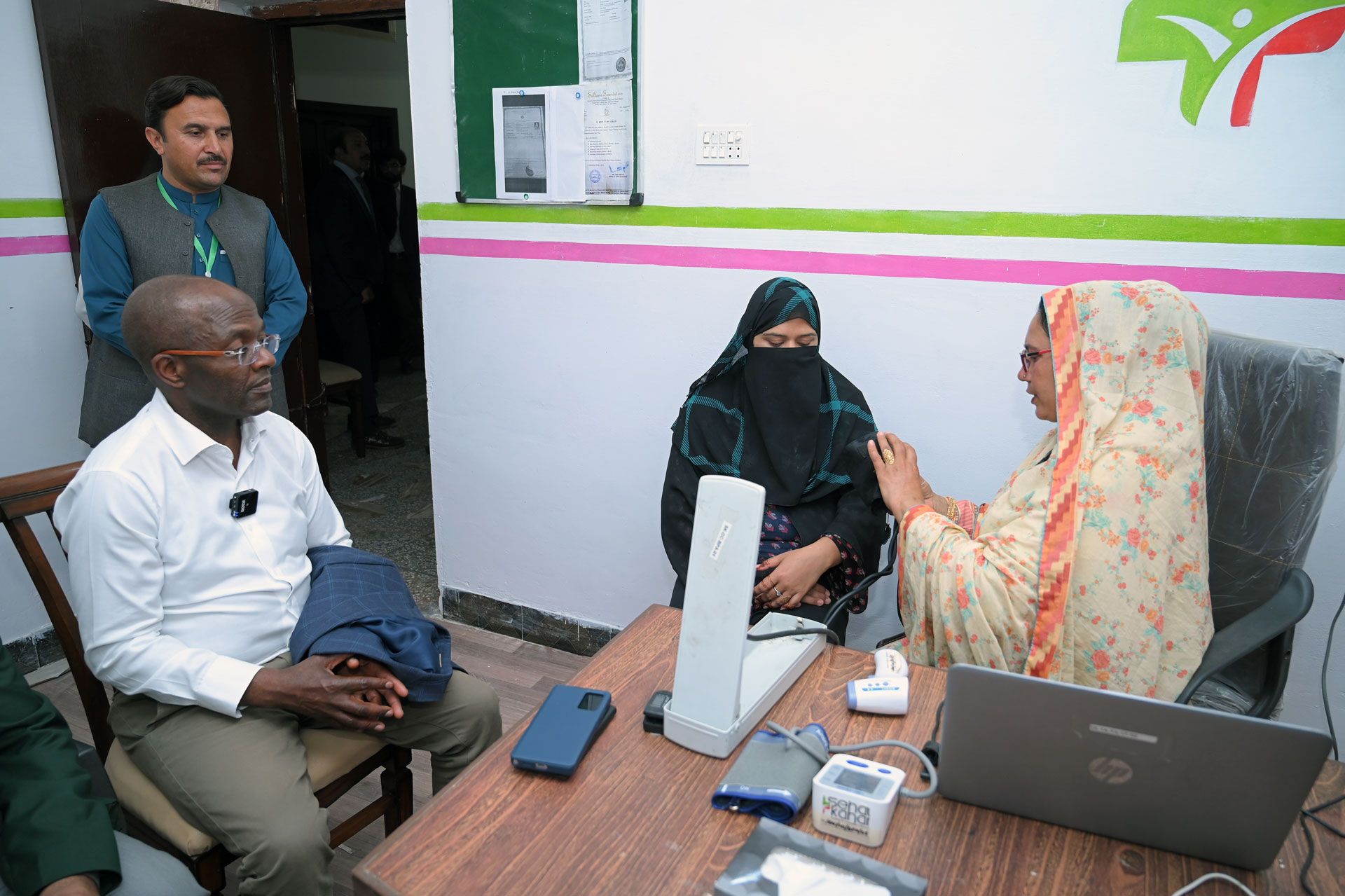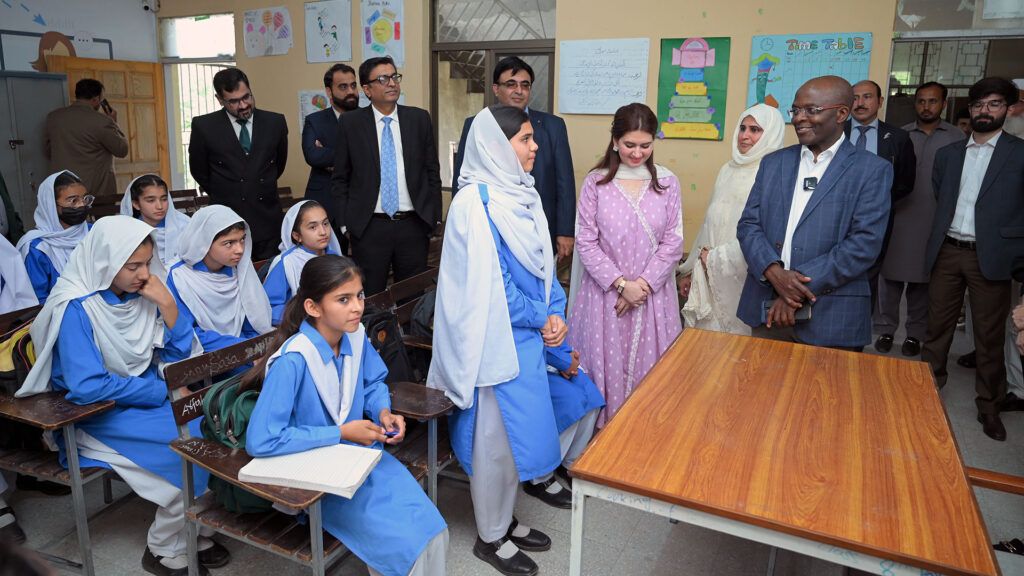
Pakistan’s Smart Villages transform lives
By Cosmas Luckyson Zavazava, Director, Telecommunication Development Bureau, ITU
ITU’s Smart Villages and Smart Islands initiative has proved a successful and sustainable way to improve the quality of life, economic opportunity, and services in rural communities.
I had the pleasure of joining representatives from the Government of Pakistan, Huawei, and other partners for the 16 April launch of the programme in Swabi, now the country’s third ITU Smart Village.
That same day, I visited the first one, Gokina, to see how it has blossomed since its inauguration in early 2023. I was keen to see what Gokina’s experience might foretell for Swabi and another Pakistani community, Sambrial, which became a Smart Village in late 2024.
Our main areas of work in Gokina, a mountaintop town of 6,000 near Islamabad, are the e-health clinic, run by partner Sehat Kehani, and the online school, run by TeleTaleem.
I felt deeply rewarded by the residents’ enthusiastic embrace of Smart Village services and opportunities.
The clinic has provided more than 5,000 online consultations, more than 100 local girls are attending science courses for the first time, and more than 250 women are learning digital skills and entrepreneurship.
Behind these numbers are real people who are benefitting from telemedicine, as well as gaining new aspirations and skills for a wider digital world. I was pleased to meet many of them.
Online healthcare overcomes isolation
Gokina has become the proving ground for an innovative model of rural healthcare that reduces the need for long-distance travel and large expenditures. Residents credit the Smart Village’s telemedicine clinic with providing care where none existed and turning around critical cases.
Patients walk in, are evaluated by a clinic coordinator who is also a healthcare worker, and then, if necessary, are connected via chat, audio, and video with a doctor for an online consultation. By focusing on digital solutions and community engagement, the clinic can offer services at lower costs. An appointment costs the equivalent of 33 cents (USD 0.33).
Clinic Coordinator Adeela Saeed told me how late one evening, two-year-old Zainab was brought to the clinic with a swollen face, difficulty in breathing, and covered in red spots. Ms. Saeed quickly recognized a dangerous case of measles. She connected with the clinic’s online doctor, who confirmed the diagnosis and prescribed medication, which the clinic provides.
Zainab’s family had hesitated to seek care because they didn’t have much money, but the low cost and accessibility of the Smart Village clinic enabled them to do it. Zainab’s grandmother told Ms. Saeed that the family had feared they were losing the toddler and called the clinic “a miracle.”
“This clinic has changed our lives,” she said. “We no longer feel isolated or without hope when someone is ill.”
Ms. Saeed also told our delegation about two cases in which the clinic likely prevented a heart attack or stroke: Naseeran, 55, came into the clinic with chest pain and crisis-level blood pressure and was given emergency treatment that hospital officials said had probably saved her life. On another occasion, Andleeb, 28, appeared at the clinic in a state of confusion and unable to communicate with the coordinator. Within thirty minutes, the clinic had stabilized Andleeb’s extremely high blood pressure, restoring her ability to communicate, and referred her to a specialist to manage her condition.
At school: Across a distance, a teacher and student find new optimism about the future
Saman Batool was already working as a science teacher at the federal government’s Model School for Girls in the nearby capital, Islamabad, when TeleTaleem began online school operations for Gokina.
She said she found her purpose in introducing the wonders of science to children in a village that had never had a science teacher. She began to spend her spare time crafting interactive lessons.
“It’s deeply fulfilling to know I’m making a difference in their lives and in the future of our country,” Ms Batool told me.
Neha Nasir, a Year 8 student with a lifelong dream of becoming a doctor, threw herself into the subject. Before long, she participated in a school science exhibition, demonstrating a working model of the circulatory system and explaining the functions of the heart.
“I thought my dream was lost,” Neha said. “But now, I feel like I’m finally on the path to becoming a doctor. I want to help others in my village just like this program has helped me.”

More than 100 local girls are receiving science education for the first time through online courses.
Smart Village Gokina proves its sustainability
Over the past year, Gokina’s education and health services have made another important breakthrough – overcoming their initial reliance on funding from the ITU Smart Villages and Smart Islands initiative.
Sehat Kehani, a business that operates nationwide, varies its healthcare fees according to each community’s economic conditions, allowing areas with higher incomes to shore up clinics in poorer areas like Gokina.
TeleTaleem has adopted Gokina’s smart classroom and is running it pro bono while looking for longer-term partnership arrangements.
Driving away from Gokina, I felt determined to keep building on the Smart Village model. It has proven its value with flying colours, and I am eager to see what we can achieve next.
ITU’s Smart Villages and Smart Islands (SVSI) initiative is a digital transformation project designed to provide affordable connectivity and sustainable digital services to remote communities in developing countries. It aims to improve the wellbeing and livelihoods of people by empowering them with digitally enabled solutions and skills that address their daily needs.
Header image caption: The telemedicine clinic in Gokina Smart Village has provided more than 5,000 consultations since it opened in 2023 and has handled health crises.
Images credit: ITU
